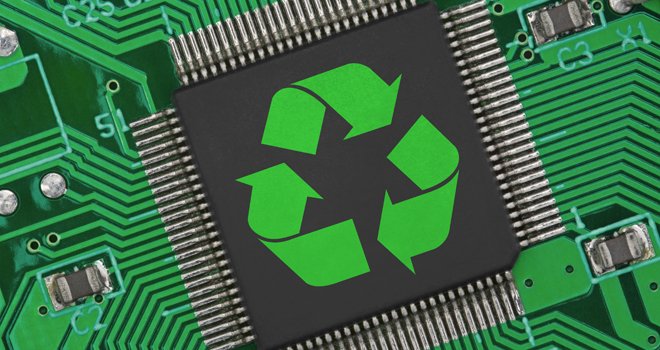
Reading a post from Technology Forecasters’ Pam Gordon, Outsmarting Waste in Electronics, a personal event came to mind.
I have a two-year-old front-loading washing machine that recently broke. The door lock would not engage – it made a very soft, sickly ‘click’ sound instead of the firm thump of a solenoid.
After cursing once or twice, I read related horror stories on a few blogs and decided to try fixing the problem myself. I purchased a replacement part on Amazon and watched a Youtube video for my service training. The whole fix took about 7 minutes to complete.
The part I replaced was a door lock assembly. It’s a slightly curved plastic part with compartments to hold the solenoid and interlock switches. The plastic was broken.
What I find amazing is that an engineer like me could have easily predicted where the stress points on the plastic would be, and, therefore where it would break. The company should have known as well, they had enough complaints about it online!
Sadly, a simple tooling change would have prevented this issue entirely.
As designers we rarely have Reduce, Reuse, and Recycle as the first three line items on our specifications.
However, as consumers we are brutally aware of the failure to consider these issues when we go to the store to buy more ink and realize with shock that a new printer costs less than a replacement cartridge.
Here are a few simple things we should consider as we Design for Environment.
Basic Electronics Design for Environment (DfE):
- Minimize the number of parts
- Select environmentally friendly materials where possible
- Consider the method of disposal
- Design for Serviceability
- If electrolytic capacitors are used, select a working voltage at least 2X the expected voltage. Use low ESR if large currents are expected. Have at least 20 degree C rating above the maximum environmental temperature.
- Don’t believe the power ratings in data sheets. Consider deration curves carefully and under-drive LEDs and power parts as much as possible to extend their life. Note: PWM may not provide a true power averaging, peak currents affect junctions.
- Conformal coat PCB assemblies if dust and moisture protection is necessary
- Be aware of shock and vibration. Observe the mass of the components as well as the orientation and mounting.
- Perform an FMEA to identify weaknesses
In this disposable society, let’s start making the ‘Repair or Replace’ decision a lot more difficult.
Learn more about our complete Design Services on our website, or give me a call any time at 262.501.6686 if you’d like to discuss DfE or DFX. Maybe you have a washing machine horror story of your own!


